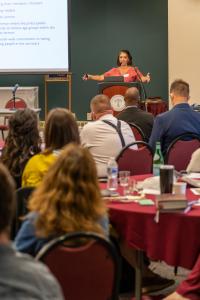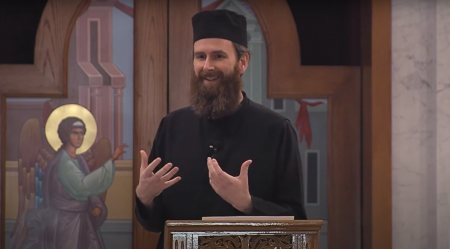Orthodox from around the world attend Leadership Conference at St Vladimir’s Seminary

The Orthodox Christian Leadership Initiative (OCLI) held its National Orthodox Advanced Leadership Conference for the fifth year running at St. Vladimir’s Seminary, September 17–19, 2021.
The event, which allowed in-person and online participants this year, drew More than 100 people representing four countries, nine Orthodox jurisdictions and even non-Orthodox, and twenty-three states across the United States. Nearly half of the participants joined the conference onsite, and participants from Australia and India joined in the middle of the night!

“My first time, and I thought this conference was amazing!” said one conference-goer. “It was very well organized, a lot of great information was given, and I enjoyed meeting so many people.”
The fifth annual edition of the conference, with its focus of “Generously Investing in Emerging Leaders,” featured ordained and lay speakers from multiple jurisdictions and organizations: Fr. Kosmas Kallis and Steven Christoforou from Y2AM, Christina Andresen (Orthodox Christian Fellowship) Anna Kallis (Telos Project), St. Vladimir’s Doctor of Ministry candidate Fr. Elias Dorham, Michelle Moujaes (Faithtree Resources), St. Vladimir’s Seminary Alumna Katrina Bitar (YES North America), and Fr. Timothy Hojnicki (St. Raphael School).

“We had nearly equal representation from men and women among our younger emerging leaders, seasoned lay leaders, and clergy which allowed for such an enriching experience and exchange of insight and ideas,” said OCLI Executive Director Hollie Benton (SVOTS’ class of 1999). “We have so many creative and hard-working servant leaders whose ministries support mentoring, making early life transitions, and hearkening to God’s call with a spirit of generosity rooted in responsibility and gratitude to all that our Lord has provided!”
OCLI planned an online follow-up event for participants and will make videos of the conference presentations available for them.
About OCLI
The Orthodox Christian Leadership Initiative exists to nurture and empower Orthodox Christian servant leadership. It is a national initiative to increase generosity, servant leadership, and social outreach by clergy and laity of all jurisdictions working together nationally, regionally, and locally.
Originating from the Orthodox Vision Foundation and its annual Orthodox Advanced Leadership Conferences beginning in 2017 and hosted at St. Vladimir’s Seminary, OCLI was established as a 501(c)(3) nonprofit in October 2018.












